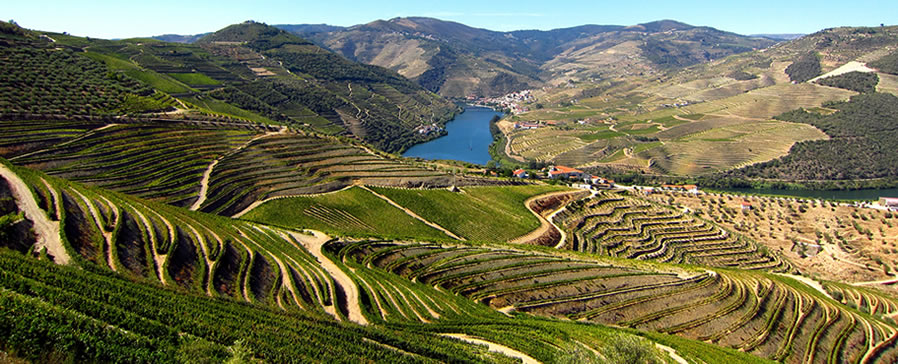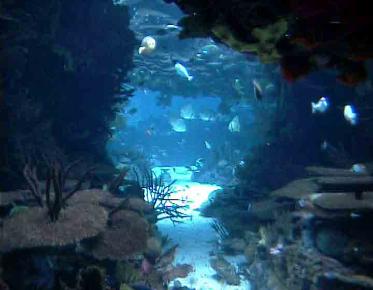Portugal
Portugal is a southern European country on the Iberian Peninsula, bordering Spain and the Atlantic Ocean. Its oceanside location influences many aspects of its culture – salt cod and grilled sardines are national dishes, the Algarve’s beaches are a major tourist destination and much of the nation’s architecture dates to the 1500s-1800s, when Portugal had a maritime empire.
Capital: Lisbon
Dialing code: +351
Population: 10.46 million
Tourist Attractions
1. Belém Tower
Together with the Jeronimos Monastery, the Belem Tower is one of the most symbolic edifices of Lisbon. It too is an exquisite materialization of the superb Manuelin style (with discrete elements characteristic of sundry other architectural styles), and it too is part of the UNESCO World Heritage of the city (declared as such in 1983). The tower is located, just as the name suggests, in the Belem district, and it is also known as the Tower or Castle of Saint Vincent (Castelo de Sao Vicente de Belem). The history of the tower is substantially related to the age of the great geographical discoveries. It was built in the 16th century (between 1514 and 1520), by order of King Manuel I, who decided to implement the plans of his predecessor, King Joao II, in order to reinforce the defense system on the shores of the Tagus River. The chief architect was Francisco de Arruda, who inserted visible Moorish elements in the overall structural and decorative patrimony of the tower. The tower is interesting to explore and admire both on the outside and on the inside. Thus, highlights refer to the Gothic statue of Nossa Senhora do Bom Sucesso (Our Lady of Good Fortune) placed under a lushly decorated canopy, to the rhinoceros head under the western watchtower of the structure, and, of course, to the totality of watchtowers, roofed balconies, windows, loggias and intricate decorative motifs which give the impression that, while carved in stone, are as light as to almost be able to float. The interior of the structure is divided into several levels. The first level is where the Governor’s Hall (Sala do Governador) is located, whereas the so-called Sala dos Reis (King’s Hall) is located on the second floor. The Audience Hall (Sala das Audiencias) is located on the third floor. The fourth floor is sunken in the richly decorated set yielded by the ceiling and by the walls. Lisbon Card holders can visit the Belem Tower for free, which is a pretty strong incentive, given the edifice is one of the most prized tourist sights of Lisbon.
2. Mosteiro dos Jerónimos
Belém’s undisputed heart-stealer is this Unesco-listed monastery. The mosteiro is the stuff of pure fantasy; a fusion of Diogo de Boitaca’s creative vision and the spice and pepper dosh of Manuel I, who commissioned it to trumpet Vasco da Gama’s discovery of a sea route to India in 1498. Wrought for the glory of God, Jerónimos was once populated by monks of the Order of St Jerome, whose spiritual job for four centuries was to comfort sailors and pray for the king’s soul. When the order was dissolved in 1833, the monastery was used as a school and orphanage until about 1940. Entering the church through the western portal, you’ll notice tree-trunk-like columns that seem to grow into the ceiling, which is itself a spiderweb of stone. Windows cast a soft golden light over the church. Superstar Vasco da Gama is interred in the lower chancel, just left of the entrance, opposite venerated 16th-century poet Luís Vaz de Camões. From the upper choir, there’s a superb view of the church; the rows of seats are Portugal’s first Renaissance woodcarvings. There’s nothing like the moment you walk into the honey-stone Manueline cloisters , dripping with organic detail in their delicately scalloped arches, twisting auger-shell turrets and columns intertwined with leaves, vines and knots. It’s just wow. Keep an eye out for symbols of the age like the armillary sphere and the cross of the Military Order, plus gargoyles and fantastical beasties on the upper balustrade. If you plan to visit both the monastery and Torre de Belém , you can save a little by purchasing a €12 admission pass valid for both, or €16 including the Museu Nacional de Arqueologia .
3. Douro

The Douro is one of the major rivers of the Iberian Peninsula, flowing from its source near Duruelo de la Sierra in Soria Province across northern-central Spain and Portugal to its outlet. The best months to visit are May and September: the wine harvest colours and atmosphere in September are particularly magical, and you can take part in traditional grape crushing by foot. As our wine expert, Victoria Moore, says, 2011 was a bumper vintage for port wines, so stock up while you can. Don’t miss one of the world’s prettiest and oldest bookshops, Porto’s Livraria Lello & Irmão, which has been selling books since 1881 (Rua das Carmelitas 144; 222 002 037). Visit Salamanca’s covered food market, just off the Plaza Mayor through the Arco del Toro (through which the bulls were walked into the square for bull fights), for pata negra (Iberian ham), local cheeses and pastries.
4. pena palace

Palácio da Pena, or “Castelo da Pena” as it is more commonly known, is the most complete and notable example of Portuguese architecture in the Romantic period. It stands on one of the rocky peaks of the Serra de Sintra, and blends in a surprisingly fortunate manner with its natural background of greenery and crags, testifying to the aesthetic potentialities of the project. The Palace dates back to 1839, when the King Consort Dom Fernando II of Saxe Coburg-Gotha (1816-1885) bought the ruins of the Hieronymite Monastery of Nossa Senhora da Pena and started to adapt it for use as a residence, according to his Romantic taste. As his director of the works, Baron von Eschwege put into effect the King’s revivalist ideas and round the restored ruins of the monastery raised a majestic pastiche inspired by the palaces and castles of Bavaria. Fanciful to an extreme, the architectural fabric of Pena finds much of its inspiration in the Moorish, Gothic and Manueline motifs of Portuguese art, as well as in the Wagnerian spirit of the Schinkel Castles of Central Europe. It is to be noted that of the former 16th Century monastery there were preserved the Manueline cloister and the chapel, the latter with a celebrated Renaissance reredos by the sculptor Nicolau Chanterene.
4.5 km from Old Quarter Parque da Pena – Estrada da Pena, 2710-609 Sintra
Opening Hours: 16 Sept -30 June 10.00 – 17.30 / 01July – 15 Sept 10.00 – 19.00
Last Entry: 1 hour before closing Open all year apart from Christmas & New Year Admission: 7 € (Pena park included)
5. lisbon oceanarium

The Lisbon Oceanarium is the largest indoor aquarium in Europe and houses more than 8,000 fish, birds, mammals and invertebrates. Bring the family to be entertained while learning about conservation and ocean habitats around the world. The design of this waterfront aquarium is part of what makes it so special. The building juts out over the ocean and resembles a huge cement and glass ship. It is particularly impressive when lit up at night, with the lights reflecting off the water. Inside, this sleek modern building is equally impressive. There are two levels to explore: the surface level and the underwater level. Wander through the different exhibits that are separated by transparent acrylic walls and discover the habitats of ocean environments around the world. Start at the bottom and work your way up. You’ll meet wolf eels, purple-striped jellyfish and the giant pacific octopus in the Temperate Pacific area. Admire sea dragons and other creatures that live near the ocean floor at the Antarctic display. You’ll see fluorescent corals, mangrove forests and bioluminescent fish in the recreation of the Tropic Indian Ocean. The North Atlantic exhibit features seagrass beds where sharks and rays hide. The surface level shows the sunnier side of ocean life. Here you’ll see birds and mammals as well as fish that swim close to the surface. The Global Ocean exhibit represents all the oceans and is an impressive 23 feet (7 meters) deep. Approximately 100 species share this huge aquarium. The Lisbon Oceanarium is located on the Esplanada Dom Carlos along the waterfront. It is accessible by bus or tram. The aquarium is open daily and there is an admission fee for permanent and temporary exhibits.
Hotel
| Hotel name | Address | Telephone |
| MYRIAD by SANA Hotels | R. do Cais das Naus, 1990-173 Lisboa,
Portugal |
+351 21 110 7600 |
| Royal Savoy Hotel Madeira | R. Carvalho Araùjo 7, 9000-022 Funchal,
Portugal |
+351 291 213 500 |
| Hotel Portugal | R. João das Regras 4, 1100-294 Lisboa,
Portugal |
+351 21 884 2120 |
| Sintra Boutique Hotel | Rua Visconde de Monserrate 48, 2710-591 Sintra,
Portugal |
+351 21 924 4177 |
| Porto Bay Falésia Hotel | Quinta do Milharó, Olhos de Água, 8200-591
Albufeira, Portugal |
+351 289 007 700 |
| Hotel Vila Galé Lagos | Meia Praia, Portugal | +351 282 771 400 |




